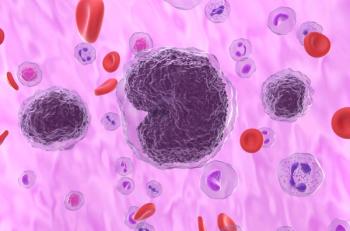
Study With MS Implications Shows How Microglia Limit Macrophage Infiltration After Demyelination
Scientists have long known that both microglia and blood-derived macrophages play roles in how the central nervous system responds to demyelination, which occurs in multiple sclerosis. A new study explains how the two interact.
New research is opening a new window into how microglia in the brain and central nervous system (CNS) interact with macrophages in the blood. Investigators say the findings could lead to new therapies for diseases like
It’s long been known that microglia and macrophages both play a role in how the CNS responds to injury. However, due to similarities between the cells, scientists have thus far been unable to differentiate the particular contributions of the 2 types of cells.
In a
Plemel, the study’s corresponding author, told The American Journal of Managed Care® in an email that the ability to use single-cell RNA sequencing made the difference.
“Although we couldn’t differentiate these cells we knew that they were important during regeneration of white matter (also axons), but these same cells are also at times clearly cytotoxic,” he said. “I wondered if some of this may be because we were not able to differentiate these cells meaningfully. So, when tools became available to distinguish microglia and macrophage I wanted to look at these cells more closely.”
To better understand the interactions, Plemel and colleagues genetically labeled microglia and CNS-associated macrophages, thereby enabling them to distinguish the cells from infiltrating macrophages.
What they found was that in areas of CNS injury, microglia essentially surrounded the blood-derived macrophages, effectively preventing the dispersal of the macrophages. Plemel said this could help explain why the blood and spinal cord are “immune privileged,” or less likely to lead to immune-mediated rejection.
“Our results could provide a new explanation to this immune privilege state, in the microglia are restricting access from the blood-derived macrophage (that can mediate rejection),” he said.
The findings have direct implications for MS and other demyelinating disorders; the researchers found that both microglia and macrophages are present in the CNS early after demyelination. However, the microglia seem to take charge thereafter.
Plemel and colleagues decided to remove the microglia to see what would happen. When they did, the macrophages accumulated unabated, and then began entering into uninjured tissue, something that is toxic. Thus, it appears microglia play a role in stopping macrophages, acting as a barrier to stop harmful movement of macrophages. However, Plemel said there appear to be exceptions.
“In reference to multiple sclerosis, there is entry of monocyte derived macrophages, which suggests that the way that microglia limit access into the CNS can be turned off,” he said.
“Understanding how this happens may provide a way to treat MS (as the entry of immune cells is clearly toxic).”
Plemel said the ability to differentiate these types of cells could also lead to significant steps forward in the development of therapies for other neurological diseases. He said a lot more study will be needed before the findings can be turned into real-world therapies, but the study suggests investigators now have the tools and the understanding to undertake that research.
Reference
Plemel JR, Stratton JA, Michaels NJ, et al. Microglia response following acute demyelination is heterogeneous and limits infiltrating macrophage dispersion. Science Advances. 2020;6(3). doi:10.1126/sciadv.aay6324.
Newsletter
Stay ahead of policy, cost, and value—subscribe to AJMC for expert insights at the intersection of clinical care and health economics.













































